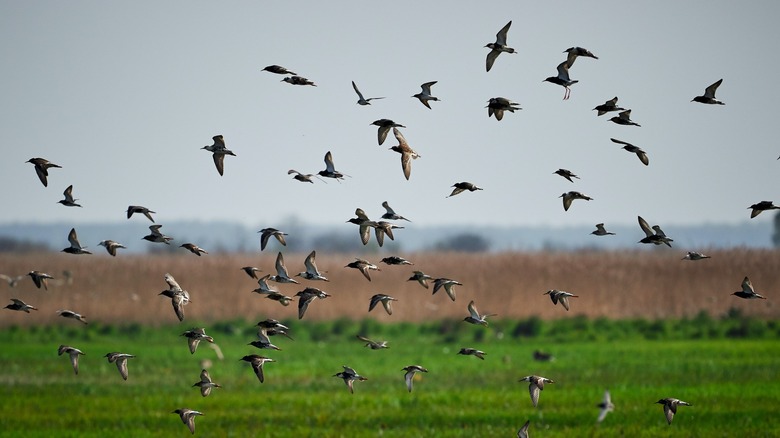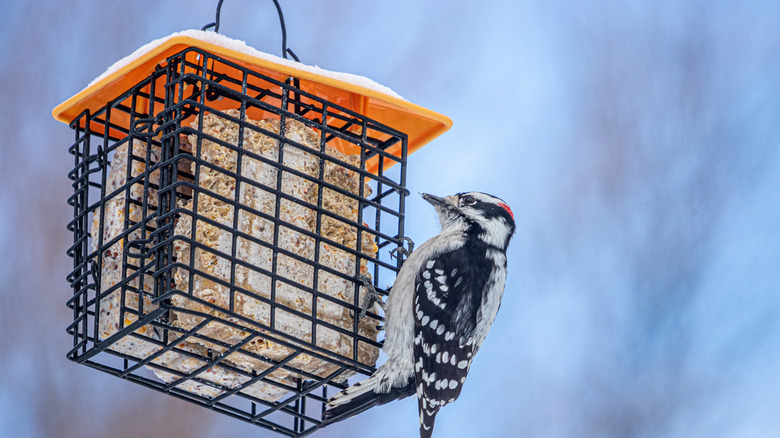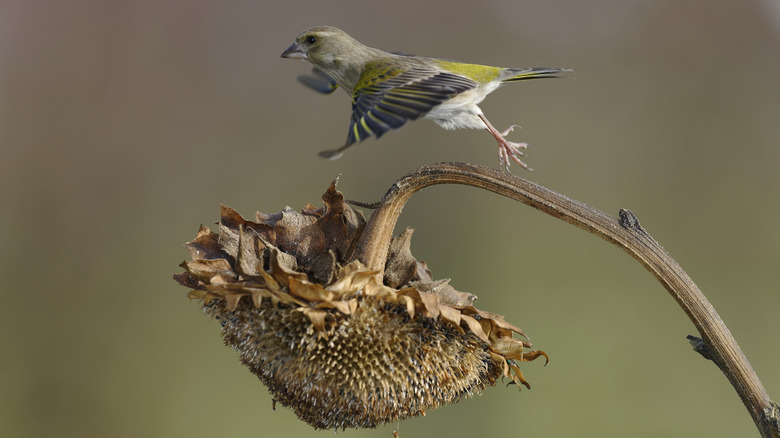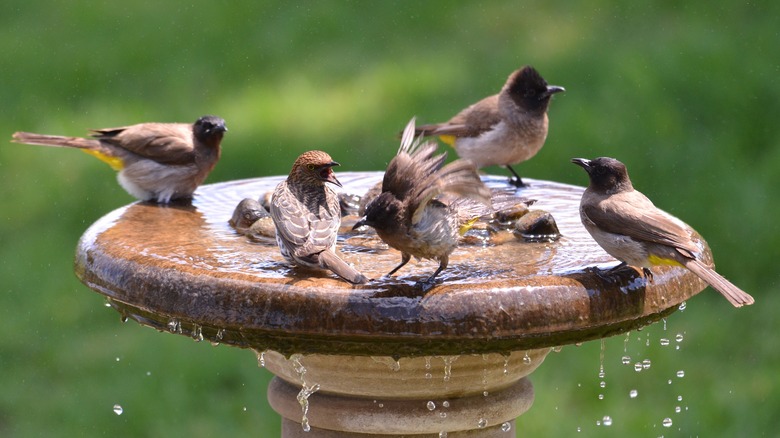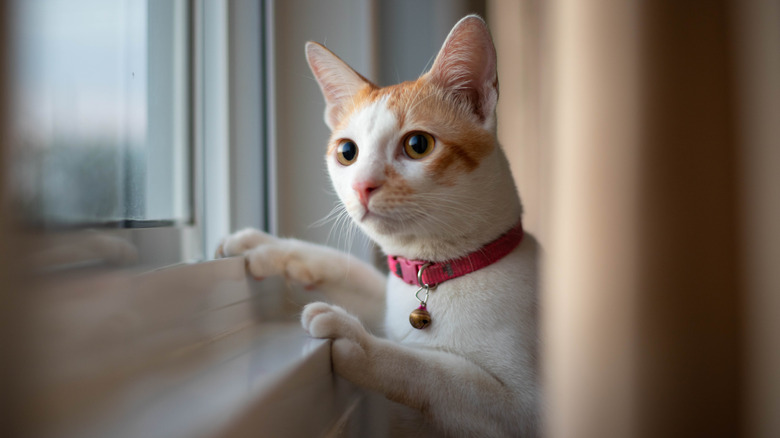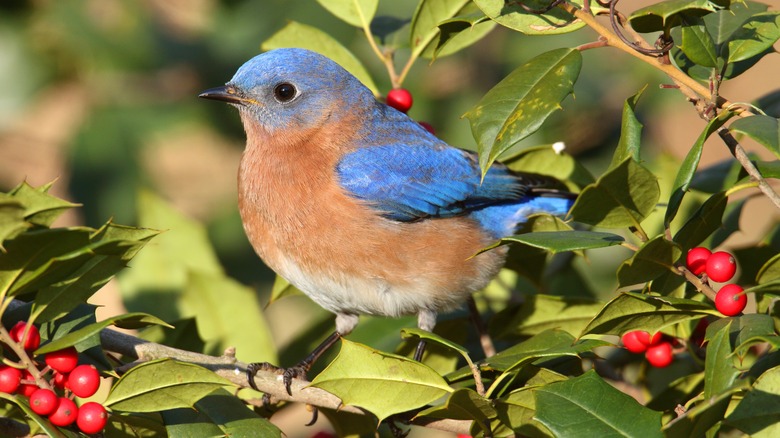Ways To Help Birds During Migration Season
Birding is a year-round activity because some birds spend all four seasons in one place. However, about 75% of birds migrate to warmer climates during the winter and return to their summer homes in the spring. During autumn, all those feathered beauties making their way from north to south could use some support for their long journeys. Think of your yard as that vital truck stop where you grab a bite to eat, a drink, and refuel on a road trip. There are several simple ways you can provide everything a migrating bird needs to reach its destination in full health.
North America has four migration flyways: the Pacific, Central, Mississippi, and Atlantic. Each of these paths consists of a region that runs north to south. The path a bird takes depends on its species. If you live on the East Coast, you may host the Black-throated blue warbler on the Atlantic flyway. Those living on the Pacific flyway may enjoy a visit from the Roufous hummingbird. By providing the right resources for the migration of three-quarters of all wild birds, you are certain to see some new and exciting species in your own backyard.
Provide high-energy food sources
Migration is hard work that requires a lot of fuel. Birds may travel up to 16,000 miles between their summer and winter homes, and for some species, part of that path is over the ocean. If you live along the southern coast, your support is extra important. Your home may be a bird's last pit stop before making a non-stop flight overseas. Because different types of birds prefer different food and feeders, offering a variety of options will attract the most feathered friends.
To stock up on fuel for their flight, birds need high-protein food sources. Suet cakes are a great source of food year-round, but they are particularly helpful during migration. As the name implies, the main ingredient in these square blocks is suet, a hard fat rendered from farm animals. Different types of suet cakes are available, including options full of nuts and fruit, perfect for migrating birds to fill up on the fuel they need. Shelled or unshelled peanuts, pumpkin seeds, thistle seeds, and berries in different types of feeders are also excellent food sources for a variety of birds.
Wait to deadhead plants
You may be itching to deadhead the spent flowers in your garden, but the seeds in some types of dry blooms are a favorite among migrating birds. Coneflowers and sunflowers are certainly favorites of smaller birds like finches. This might even be a good time to plan more bird-friendly blooms for your landscape next year. The list of flowers that are beneficial from summer through the migration season is long, so you should be able to find something beautiful for your ornamental spaces that also supports birds. Large blooming bushes like hibiscus and serviceberries are perfect spots for birds to perch while they snack. Crabapples and native holly trees are beautiful and beneficial. For your flower beds, zinnias, poppies, and black-eyed Susans are easy to grow from seed, and they make a stunning summer display before fading into edible seeds for many types of birds.
If you are not too picky about your lawn, some "weeds" also offer seeds that feed migrating birds. Dandelions and wild violets grow naturally, making them no-maintenance plants that still feed feathery fowl. And remember, you're not neglecting your lawn; you are supporting wildlife.
Keep water sources full and clean
Just like humans, birds need access to clean water during extreme exertion, like flying thousands of miles. With so many different birds stopping along the way, not only do you need to keep water sources full, but they also need to be cleaned regularly to help prevent the spread of disease and parasites. Dirty birdbath is actually more harmful than providing no water at all. Stagnant water breeds mosquitoes, so you certainly do not want to leave your birdbath filled with disgusting, mosquito-larvae-filled water. You don't need the extra biting buggers in your yard, and migrating birds need clean water to keep going.
Thankfully, keeping your birdbath clean is a simple process that you should do anytime you notice a build-up of gunk or murky water. Skip the harsh chemicals in household cleaners and dish soap because the residue can be harmful. All you need is to mix one part vinegar with nine parts water and use a little elbow grease to scrub away any filth. Fill the birdbath with fresh water and know your visitors are safe.
Leave pets indoors
This one might be a bit challenging, but it is important to keep pets in as much as possible to minimize bird-hunting. We love our dogs and cats, but they are still predators — the ones that aren't too lazy, that is. High-energy dogs will often chase anything that runs or flies. By keeping your feeders and birdbaths away from areas your dog can access, you can greatly reduce the number of birds it chases or, even worse, catches.
Cats are a particular threat to migrating birds. In fact, our favorite felines are the second leading cause of bird deaths after loss of habitat. According to All About Birds, 69% of birds are killed by outdoor feral cats, and another percentage is killed by indoor cats that are allowed outside. It may not be possible to keep your kitty inside all the time, but just reducing its outdoor explorations can help protect migrating birds.
Provide shelter
Sometimes, birds can get caught up in a storm system and need a safe place to hunker down until the bad weather passes. Other times, they are tired and just need to rest for a few days. You can create a protective habitat by making a small brush pile in a corner of your yard. There's no need to worry about keeping an unsightly pile around all year; just stack up your prunings and broken limbs or sticks and leave it during migration season. Once winter arrives, you can have yourself a nice little bonfire.
A more permanent and attractive solution is to plant more bushes and trees in your yard. A nice landscaped area with a holly bush, a redbud tree, and other attractive plants offers a beautiful, safe place for birds to rest and recover during their journey south. Add a few of the stunning flowers we mentioned previously, and you will have a fully stocked paradise where migrating birds might return each year for a safe place to land.
